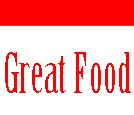|

|

|

|
Make
sure you cook and keep foods at the correct temperature to ensure food
safety. Bacteria can grow in foods between 40 ºF and 140 ºF. To keep
foods out of this danger zone, keep cold foods cold and hot foods hot.
Use a clean food thermometer and measure the internal temperature of
cooked food to make sure meat, poultry, and egg dishes are cooked to
the temperatures listed below.
What You Should Know About Bacteria
Bacteria reproduce
by dividing in two. Under ideal conditions, bacteria can divide in two
every 20 minutes. Some bacteria can form spores which protects them
from being killed. Bacteria grow best in foods that are high in protein
or carbohydrates. These foods tend to be hazardous foods.
Examples:
poultry, meat, seafood, rice and eggs. Bacteria grow quickly between
4ºC (40ºF) and 60ºC (140ºF). The most important
thing we can do with bacteria is to stop them from growing.
Bacterial Infection E. coli
Source:
- Intestinal tract and feces of humans and animals, in particular beef
Foods:
- Undercooked ground meat (hamburger)
- Unpasteurized milk and apple cider
- Contaminated water
Incubation Period:
Depends on the strain of E. coli (10 hours up to 8-10 days)
Symptoms:
- Nausea, vomiting, abdominal pain, watery or bloody diarrhea
E. coli can be destroyed by cooking.
Prevention:
- Cook hamburger to a minimum internal temperature of 71ºC
(160ºF)
- NO RARE HAMBURGERS
- Use only pasteurized milk, cheese and fruit juices or cider
-----------------------------
Some types of E. coli (like Escherichia coli O157:H7)
can cause severe complications like Hemeolytic Uremic Syndrome (HUS). 8
to 10% of people who get this strain will develop HUS. Consuming only
100 bacteria can cause illness.
|
|
|

|

|
 |







